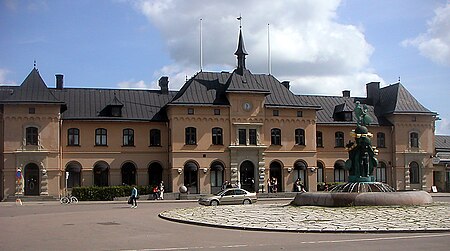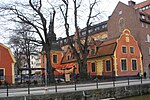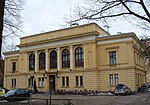Uppsala Central Station

Uppsala Central Station is a railway station in Uppsala, Sweden. It lies on the East Coast Line, which runs south to Stockholm and north to Gävle and Sundsvall. It is also the southeastern terminus for the Dala Line which runs northwest ending in Mora. There are frequent commuter services to Stockholm. Long-distance trains, such as the SJ 3000, connect Uppsala to the northern parts of the country. Many trains, including the Stockholm commuter rail (Pendeltåg), also leave the main line to connect Uppsala with Stockholm-Arlanda Airport. Next to the station is a hub for the regional coach services operated by Upplands Lokaltrafik. Many local bus routes run through or near the station grounds as well, and there is a large area set aside for bicycle parking. Located just beside Uppsala Central Station is Uppsala East Station, the western terminus of the Upsala-Lenna Jernväg heritage railway, which was relocated closer to Uppsala C in 2012.
Excerpt from the Wikipedia article Uppsala Central Station (License: CC BY-SA 3.0, Authors, Images).Uppsala Central Station
Olof Palmes plats, Uppsala Centrum
Geographical coordinates (GPS) Address Phone number Website Nearby Places Show on map
Geographical coordinates (GPS)
| Latitude | Longitude |
|---|---|
| N 59.858611111111 ° | E 17.646111111111 ° |
Address
Stationen
Olof Palmes plats 6
751 40 Uppsala, Centrum
Sweden
Open on Google Maps










